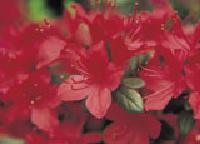Our City

Sakai has been a major part of Japan's economic and cultural identity throughout the country's history. In ancient times, a local suburb, Mozu, was chosen as the site for a necropolis featuring the Nintoku-tennō-ryō kofun and others. Later, in the middle ages, Sakai became an important hub for overseas trade, and developed as a city with a spirit of liberty and self-governance.
After World War II, the foundations of modern-day Sakai were laid through projects such as the creation of an extensive dockside industrial complex and Semboku New Town, a large-scale residential neighborhood. The city has a population of 830,000, and was made a "city designated by government ordinance" in 2006, which gives the city some powers normally reserved for prefectural governments. As such, Sakai is the major city in southern Osaka and a driving force behind the economy and culture of the Kansai Region.
Demography
| No. of Households | Population | Population Density (people/km2) | Area (km2) | ||
|---|---|---|---|---|---|
| Total | Male | Female | |||
| 367,649 | 821,884 | 391,043 | 430,841 | 5,485 | 149.83 |
| Age Group | Population | Percentage of Total (%) |
|---|---|---|
| 0 - 14 years old | 102,806 | 12.4 |
| 15 - 64 years old | 490,671 | 59.3 |
| Over 65 years old | 234,314 | 28.3 |
*includes individuals of unknown age
Official Symbols
Citizens' Tree - Willow (yanagi)

As a symbol of our efforts to create a city abundant in greenery, the willow was designated as the citizens' tree by popular vote on November 3, 1966. Usually the tree grows at the waterside, and this tree has been planted in many sections of the city's lowland areas. In fact two areas in the city are called Yanagino-cho Higashi and Nishi, named after yanagi which means willow. This tells us that willow-lined streets existed there in even old times.
City Flowering Shrub - Azalea (tsutsuji)

First planted in 1937, the collection of azalea shrubs in the grounds of the Asakayama Water Filtration Plant draw admiring eyes from many Sakai residents every year. This is why we have chosen the azalea as the flowering shrub representing our city. There is no one particular flower called the azalea: all the flowers given this name belong to an azalea family. The azalea family has more than 1500 species and 80 genera, and is mainly found from the temperate to the frigid zones in the Southern Hemisphere. About 110 out of the 1500 species are known and popular in Japan.
City Flower - Iris (hana shoubou)

The iris, star of the annual Iris Festival in June at Otori Shrine and familiar to local residents over many generations, has been adopted as the City Flower. This plant whose cultivation can be traced back to the Manyo Period (late 8th century) is most suitable as the symbol of Sakai's history and tradition. The iris has been cultivated and improved since the middle of the Edo Period (1603 - 1867) when it grew wild in various parts of Japan.
City Bird - Shrike (Mozu)

Nintoku-tenno-ryo kofun lies within the city, and is regarded as Sakai's pre-eminent historic landmark. The origin of Sakai's old name "Mozu" (shrike) is mythologically related to the emperor, who was said to have cared for a flock of such birds during his reign, and indeed these birds remain a common local sight today. The city has naturally adopted the shrike as the City Bird.
